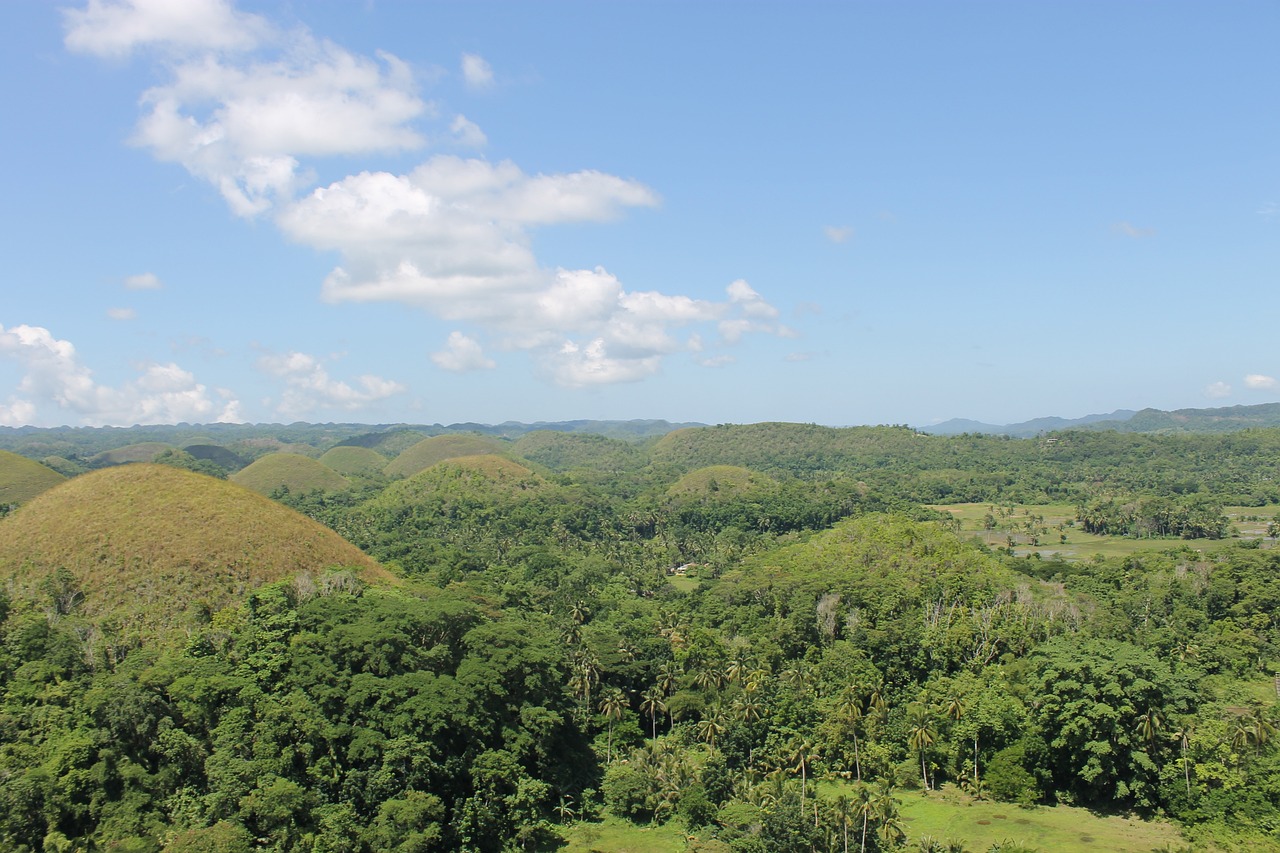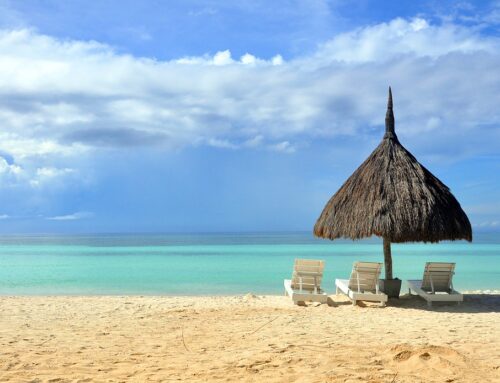
Exploring UNESCO World Heritage Sites in the Philippines
UNESCO World Heritage Sites in the Philippines You Can’t Miss
The Philippines is home to some of the world’s most incredible UNESCO World Heritage Sites. From breathtaking rice terraces to stunning Spanish-era churches, these spots offer a deep dive into the country’s rich culture and natural beauty. Let’s take a closer look at two of the must-see UNESCO sites.
1. The Baroque Churches You Won’t Forget
The Baroque Churches of the Philippines are four beautiful churches that mix European and Filipino architecture. These churches were built during the Spanish colonial period and reflect the country’s unique blend of cultural influences.
-
San Agustin Church in Manila
Located in Intramuros, this is the oldest stone church in the Philippines. Known for its Baroque design, it’s got intricate woodwork and even a museum with religious artifacts. -
Nuestra Señora de la Asuncion in Pangasinan
Found in Bolinao, this church overlooks the sea and is famous for its beautiful altar and detailed carvings. It’s a popular spot for pilgrims, offering a peaceful vibe. -
San Agustin Church in Paoay
Famous for its massive buttresses and unique Earthquake Baroque style, Paoay Church is one of the most iconic and photographed churches in the Philippines. -
San Juan Bautista Church in Miagao
Located in Miagao, Iloilo, this church is set against rolling hills and features stunning carvings of local flora and fauna. It’s a perfect example of how culture and religion blend together.
2. The Rice Terraces You’ve Heard So Much About
The Rice Terraces of the Philippine Cordilleras are often called the “Eighth Wonder of the World.” These ancient terraces, carved into the mountains over 2,000 years ago, still stand as a testament to the ingenuity of the Ifugao people and their sustainable farming practices.
-
Where They Are
The terraces are located in the Cordillera mountain range, with the most famous ones in Banaue, Batad, Mayoyao, and Hapao. -
How to Get There
From Manila, you’ll need about 9-10 hours by bus to get to Banaue. Once there, you can take a jeepney or hire a guide to explore the terraces. -
Why It’s Special
These terraces aren’t just pretty views—they represent the advanced engineering of the Ifugao people. Visitors can trek through the terraces, interact with local farmers, and even try their hand at rice planting during the right season. The Batad Rice Terraces, in particular, are known for their stunning amphitheater-like design.
These two UNESCO sites are just the start of what the Philippines has to offer. They’re perfect for anyone looking to experience the country’s rich cultural history and breathtaking landscapes. Stay tuned as we dive into more must-see spots in the next sections!
3. Tubbataha Reefs Natural Park: A Diver’s Dream
Tubbataha Reefs Natural Park is a paradise for divers and marine life enthusiasts. Located in the Sulu Sea, this UNESCO World Heritage Site is known for its pristine coral reefs and unmatched biodiversity. If diving is your thing, you’ll want to add Tubbataha to your bucket list.
Where It Is
Tubbataha is located about 150 kilometers southeast of Puerto Princesa City, Palawan. It’s in the middle of the Sulu Sea, far enough out that the area is still untouched and pure.
How to Get There
The only way to reach Tubbataha is by liveaboard dive boat, which leaves from Puerto Princesa. The trip usually takes about 10-12 hours, and it’s best to visit during the diving season, from mid-March to mid-June, when the weather is calm and the seas are clear.
Why It’s Special
-
Marine Life: Tubbataha is home to over 600 species of fish, 360 species of coral, and plenty of sharks, dolphins, and whales. It’s one of the world’s most biodiverse marine ecosystems.
-
World-Class Diving: Dive into crystal-clear waters to explore steep drop-offs, vibrant coral gardens, and famous dive spots like Shark Airport and Delsan Wreck. It’s where you might find manta rays, whale sharks, and even seahorses.
-
Conservation: Because Tubbataha is a protected area, the reefs are incredibly well-preserved. Visiting helps support marine conservation efforts, ensuring the beauty and biodiversity of this underwater world for future generations.
4. Vigan: A Step Back in Time
Vigan is one of the best-preserved Spanish colonial towns in Asia, and it offers a fascinating glimpse into the Philippines’ colonial past. Walking through Vigan feels like you’ve stepped into another time, with its cobblestone streets and charming colonial architecture.
Where It Is
Vigan,Ilocos Sur on the western coast of Luzon Island, around 400 kilometers north of Manila.
How to Get There
-
By Bus: It’s about an 8-10 hour bus ride from Manila to Vigan.
-
By Air: You can fly to Laoag International Airport, then take a 2-3 hour bus or van ride to Vigan.
-
By Car: If you’re driving, it’ll take around 7-8 hours via the North Luzon Expressway (NLEX).
Why It’s Special
-
Colonial Charm: Vigan’s iconic Calle Crisologo is lined with colonial-era houses, complete with red-tiled roofs and capiz shell windows. Many of these houses have been converted into shops, cafes, and museums.
-
Cultural Vibe: You can hop on a traditional horse-drawn carriage (called a kalesa) and explore the historic streets. The vibe here brings the Spanish colonial era to life.
-
Delicious Food: Don’t miss out on Vigan’s famous local dishes like Vigan longganisa (garlic sausages), empanada, and bagnet (crispy pork belly). The town is also known for its handmade textiles and pottery, crafted with ancient techniques.
-
Historical Sites: Beyond Calle Crisologo, Vigan is home to the St. Paul Metropolitan Cathedral, the Vigan Heritage Village, and the Syquia Mansion Museum. It’s a place where history is preserved in every corner.
5. Puerto Princesa Subterranean River National Park: A Hidden Gem
The Puerto Princesa Subterranean River National Park is a true natural wonder, famous for its stunning underground river that winds through a massive limestone karst landscape. It’s not just a beautiful sight but also an important part of the region’s biodiversity.
Where It Is
The park is located in Puerto Princesa City, Palawan Province.
How to Get There
-
From Puerto Princesa City: The park is about a 2-hour drive from the city. You can book a guided tour that includes transportation, or if you prefer to arrange your own travel, you can take a boat from Sabang Wharf to the river’s entrance.
-
By Air: If you’re flying in, you can land at Puerto Princesa International Airport from cities like Manila or Cebu. From there, a taxi or van will take you directly to the park.
Why It’s Special
-
The Underground River: The star of the show is the Puerto Princesa Subterranean River, one of the longest navigable underground rivers in the world. It stretches about 8.2 kilometers through a cave system, but tours usually cover the first 4.3 kilometers. The river is surrounded by incredible rock formations, stalactites, and stalagmites, and it’s home to bats and swiftlets.
-
Limestone Karst Landscape: The surrounding landscape is dominated by impressive limestone cliffs, caves, and sinkholes, which make the park’s geology as fascinating as its wildlife.
-
Biodiversity and Wildlife: The park is teeming with life, including over 800 plant species, 165 bird species, and various mammals, reptiles, and amphibians. It’s a hotspot for biodiversity, with a mix of ecosystems like mangroves, wetlands, and old-growth forests.
6. The Chocolate Hills of Bohol: Nature’s Sweet Surprise
The Chocolate Hills of Bohol are one of the Philippines’ most iconic natural landmarks. These 1,200 to 1,700 grass-covered hills turn brown during the dry season, creating a chocolate-like landscape that’s as unique as it is beautiful.
Where It Is
The Chocolate Hills are located in Carmen, Bohol Province.
How to Get There
-
From Tagbilaran City: The hills are about 55 kilometers away, which is about a 1.5-2 hour drive. You can take a bus, van, or motorcycle to reach the site.
-
From Panglao Island: If you’re staying on Panglao Island, you can also visit the Chocolate Hills on a day trip, with about a 2-hour drive each way.
Why It’s Special
-
Unique Geological Formation: These limestone hills are covered in grass that turns brown in the dry season, creating their signature “chocolate” appearance. The hills spread across more than 50 square kilometers, and their symmetry makes them a geological wonder.
-
Breathtaking Views: There’s a viewing deck at the Chocolate Hills Complex in Carmen where you can enjoy panoramic views of the hills, especially striking at sunrise or sunset.
-
Biodiversity and Cultural Heritage: The area around the Chocolate Hills is rich in both nature and culture. Nearby attractions include the Man-Made Forest, the Tarsier Conservation Area, and historic churches. Bohol is also home to the world’s smallest primate, the Philippine tarsier.
-
Cultural Significance: The hills are wrapped in local legend, with one story saying they were formed from a giant’s tears after losing his love. The folklore adds a touch of mystique to this already magical place.

















